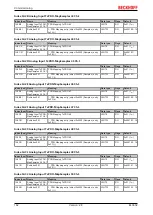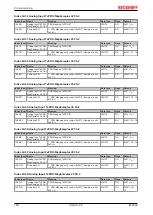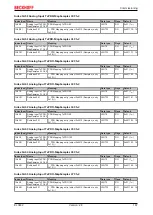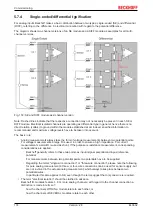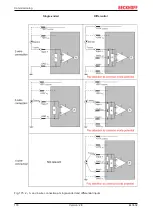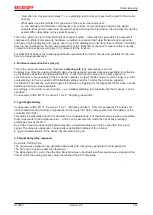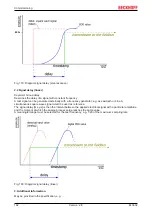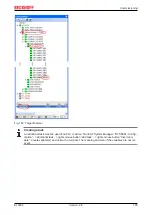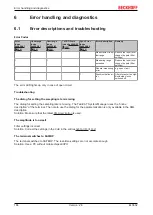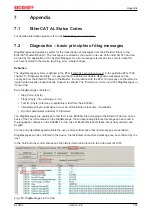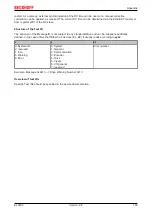
Commissioning
EL3632
174
Version: 2.8
5.7.4
Single-ended/differential typification
For analog inputs Beckhoff makes a basic distinction between two types:
single-ended
(SE) and
differential
(DIFF)
, referring to the difference in electrical connection with regard to the potential difference.
The diagram shows two-channel versions of an SE module and a DIFF module as examples for all multi-
channel versions.
Fig. 172: SE and DIFF module as 2-channel version
Note: Dashed lines indicate that the respective connection may not necessarily be present in each SE or
DIFF module. Electrical isolated channels are operating as differential type in general, hence there is no
direct relation (voltaic) to ground within the module established at all. Indeed, specified information to
recommended and maximum voltage levels have to be taken into account.
The basic rule:
• Analog measurements always take the form of voltage measurements between two potential points.
For voltage measurements a large R is used, in order to ensure a high impedance. For current
measurements a small R is used as shunt. If the purpose is resistance measurement, corresponding
considerations are applied.
◦ Beckhoff generally refers to these two points as input+/signal potential and input-/reference
potential.
◦ For measurements between two potential points two potentials have to be supplied.
◦ Regarding the terms "single-wire connection" or "three-wire connection", please note the following
for pure analog measurements: three- or four-wire connections can be used for sensor supply, but
are not involved in the actual analog measurement, which always takes place between two
potentials/wires.
In particular this also applies to SE, even though the term suggest that only one wire is required.
• The term "electrical isolation" should be clarified in advance.
Beckhoff IO modules feature 1..8 or more analog channels; with regard to the channel connection a
distinction is made in terms of:
◦ how the channels WITHIN a module relate to each other, or
◦ how the channels of SEVERAL modules relate to each other.



